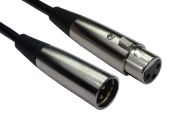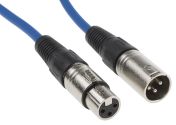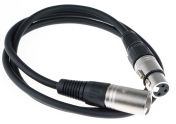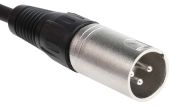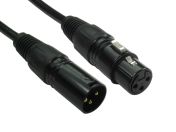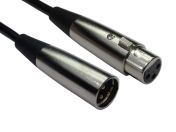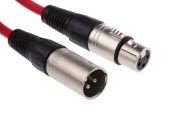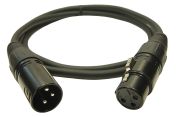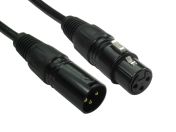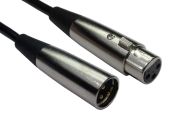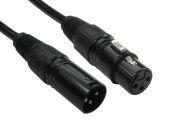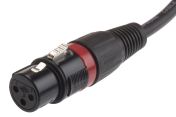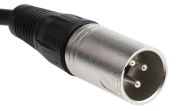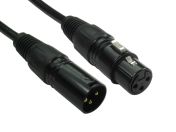- Automation & Control Gear
- Cables & Wires
- Enclosures & Server Racks
- Fuses & Circuit Breakers
- HVAC, Fans & Thermal Management
- Lighting
- Relays & Signal Conditioning
- Switches
- Batteries & Chargers
- Connectors
- Displays & Optoelectronics
- ESD Control, Cleanroom & PCB Prototyping
- Passive Components
- Power Supplies & Transformers
- Raspberry Pi, Arduino, ROCK, STEM Education & Development Tools
- Semiconductors
XLR Cables
XLR cables are a type of audio cable commonly used in professional audio applications. The term XLR stands for External Line Return and refers to the type of connector used on the cable. XLR cables are designed to carry balanced audio signals, which means they can effectively transmit audio while minimizing noise and interference.
How do XLR Cables Work?
An XLR cable typically has three pins inside the connector, arranged in a specific pattern. These pins are responsible for carrying the audio signals. The cable itself is typically shielded to further reduce interference and maintain signal integrity. XLR cables are widely used in the audio industry for a variety of applications. In addition to audio signals, XLR cables can also carry other types of signals, such as DMX signals used in lighting control for stage and event productions. They are known for their durability and reliability, making them a popular choice in professional audio settings where high-quality audio transmission is crucial. They are available in various lengths to accommodate different setups and requirements.
Applications
Microphones: XLR cables are commonly used to connect microphones to audio mixers, amplifiers, or recording devices. Live Sound Systems: XLR cables are used extensively in live sound setups, such as concerts, conferences, and events. Studio Recording: XLR cables are essential in professional studio recording environments. They are used to connect microphones, preamplifiers, audio interfaces, and other recording equipment. PA Systems: Public address (PA) systems, commonly used in venues like theatres, houses of worship, and stadiums, often rely on XLR cables. They connect microphones, speakers, amplifiers, and mixers to ensure clear and balanced audio distribution throughout the venue. Broadcast and Television: XLR cables play a crucial role in broadcast and television production. They are used to connect microphones, audio consoles, intercom systems, and other audio devices in recording studios, newsrooms, and on-location shoots. DJ Equipment: XLR cables are used in DJ setups to connect mixers, turntables, CD players, and other audio sources to sound systems or powered speakers. Stage Lighting: XLR cables also find applications in stage lighting control systems. DMX (Digital Multiplex) signals, which control the lighting fixtures, are often transmitted using XLR cables.
